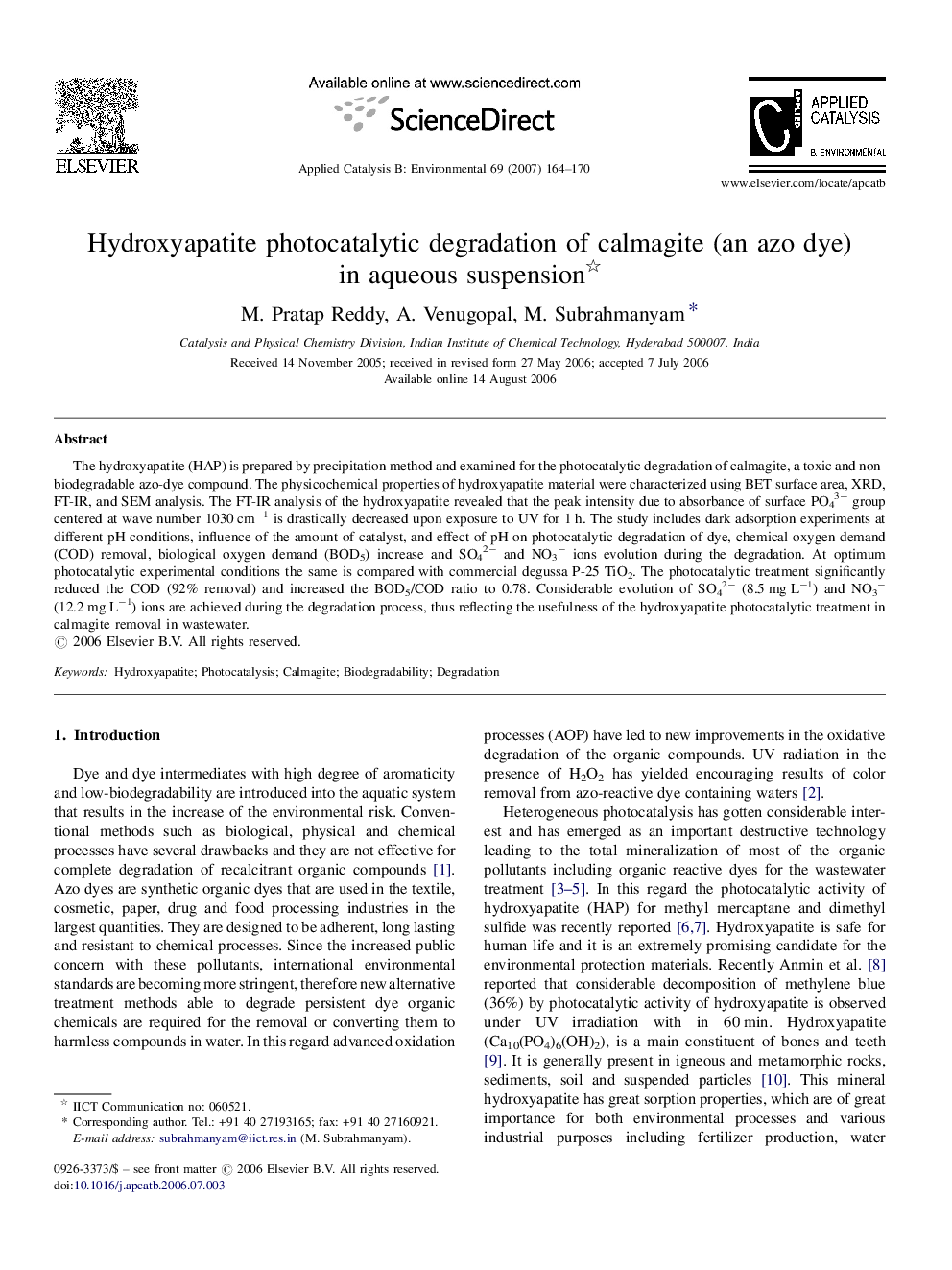| Article ID | Journal | Published Year | Pages | File Type |
|---|---|---|---|---|
| 48614 | Applied Catalysis B: Environmental | 2007 | 7 Pages |
The hydroxyapatite (HAP) is prepared by precipitation method and examined for the photocatalytic degradation of calmagite, a toxic and non-biodegradable azo-dye compound. The physicochemical properties of hydroxyapatite material were characterized using BET surface area, XRD, FT-IR, and SEM analysis. The FT-IR analysis of the hydroxyapatite revealed that the peak intensity due to absorbance of surface PO43− group centered at wave number 1030 cm−1 is drastically decreased upon exposure to UV for 1 h. The study includes dark adsorption experiments at different pH conditions, influence of the amount of catalyst, and effect of pH on photocatalytic degradation of dye, chemical oxygen demand (COD) removal, biological oxygen demand (BOD5) increase and SO42− and NO3− ions evolution during the degradation. At optimum photocatalytic experimental conditions the same is compared with commercial degussa P-25 TiO2. The photocatalytic treatment significantly reduced the COD (92% removal) and increased the BOD5/COD ratio to 0.78. Considerable evolution of SO42− (8.5 mg L−1) and NO3− (12.2 mg L−1) ions are achieved during the degradation process, thus reflecting the usefulness of the hydroxyapatite photocatalytic treatment in calmagite removal in wastewater.
